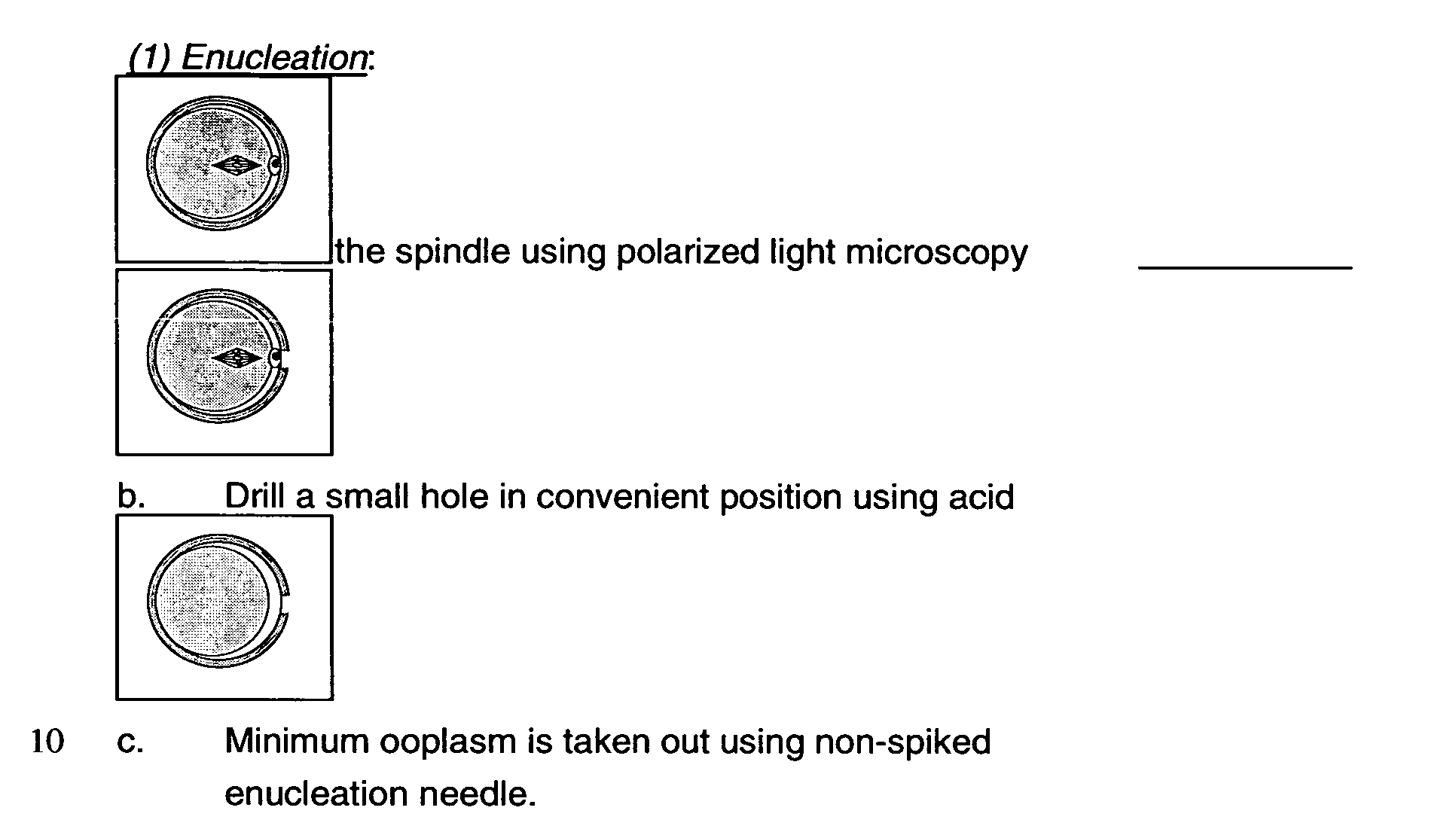Method of enucleation and oocyte activation in somatic cell nuclear transfer in primates
- Summary
- Abstract
- Description
- Claims
- Application Information
AI Technical Summary
Benefits of technology
Problems solved by technology
Method used
Image
Examples
examples
Materials and Methods
Animals
Mature female Long-tailed Macaques (M. fascicularis) weighing between 2.0 and 2.5 kg were made available for this study by the Wildlife Reserves Singapore. Monkeys were kept in a holding enclosure prior to being housed in individual cages in a well ventilated room with an average room temperature of 28° C. and 12 h daylight for daily treatments of gonadotropins. Monkeys were fed a mixed diet of fresh fruits and vegetables, supplemented with commercially available monkey chow and water. All animal procedures were approved by the Animal Holding Unit, Faculty of Medicine, National University of Singapore and the Department of Veterinary, Conservation and Research, Wildlife Reserves Singapore.
Establishment and Culture of Donor Cell Tissue Sources
Skin biopsy specimens were derived from a 180-day-old male Long-tailed Macaque (M. fascicularis) fetus and an adult male Lion-tailed Macaque (M. silenus). Cumulus cells were obtained from the follicles of the...
PUM
| Property | Measurement | Unit |
|---|---|---|
| Length | aaaaa | aaaaa |
| Length | aaaaa | aaaaa |
| Fraction | aaaaa | aaaaa |
Abstract
Description
Claims
Application Information
 Login to View More
Login to View More - R&D
- Intellectual Property
- Life Sciences
- Materials
- Tech Scout
- Unparalleled Data Quality
- Higher Quality Content
- 60% Fewer Hallucinations
Browse by: Latest US Patents, China's latest patents, Technical Efficacy Thesaurus, Application Domain, Technology Topic, Popular Technical Reports.
© 2025 PatSnap. All rights reserved.Legal|Privacy policy|Modern Slavery Act Transparency Statement|Sitemap|About US| Contact US: help@patsnap.com

